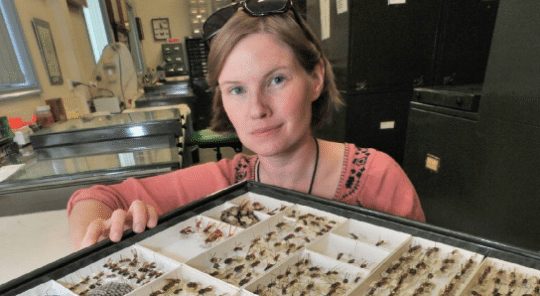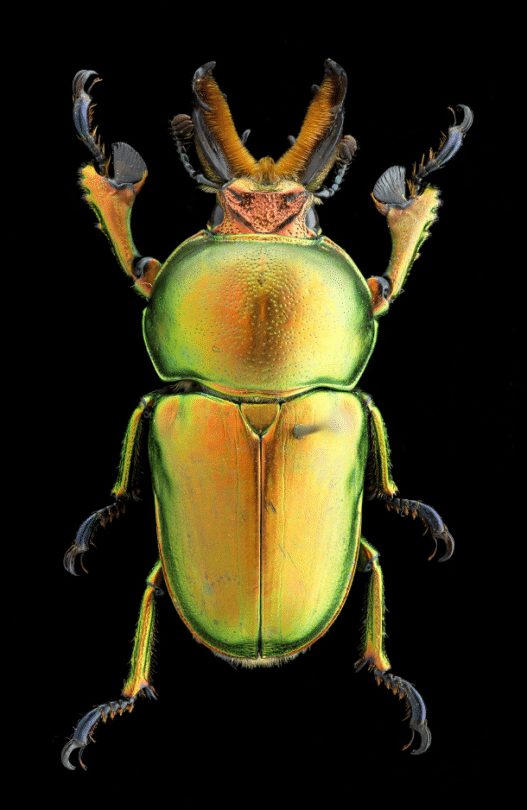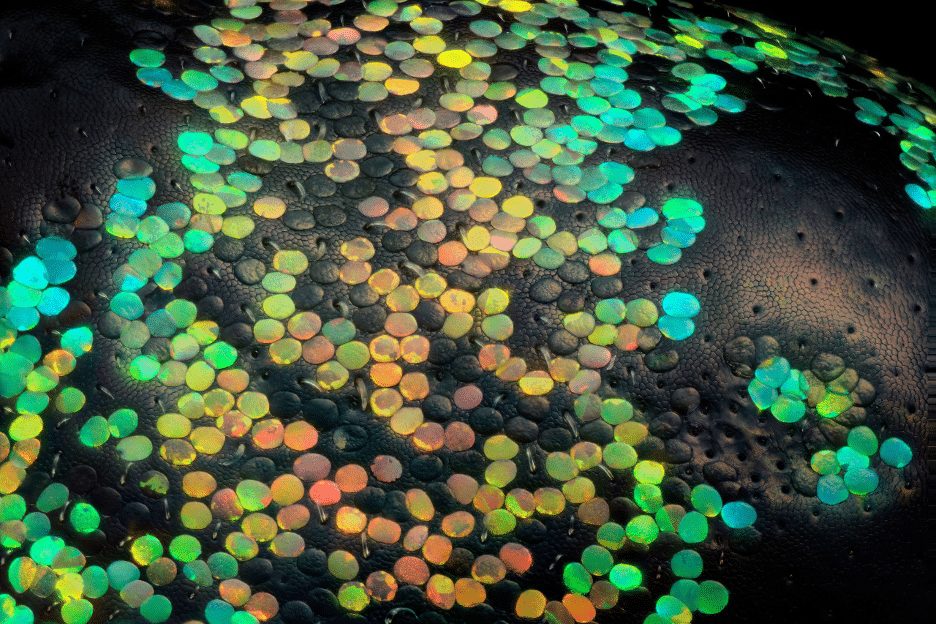
Dr. Ainsley Seago studies the evolutionary history of beetles, from systematics and diversification of Staphylinoidea (rove, carrion, and fungus beetles) to the evolution of iridescence in Curculionoidea (weevils and their relatives). She has used everything from rotting squid traps to synchrotron radiation to better understand beetles in all their glory, but believes that the most important tool of all is a strong museum collection. Dr. Seago is thrilled to work with the CMNH collection and exhibit teams to bring the museum’s outstanding invertebrate collection to a wider audience, while using it to support research in Pittsburgh, the US, and beyond.
Dr. Seago is originally from Tacoma, WA, and has just returned to the U.S. after 12 years in Australia.
Abstract of recent research (bearing in mind that I have a very loose grasp on what 8th graders are up to these days)

Among the world’s beetle species are hundreds of “living jewels,” insects with stunning jewel-like colors or shining golden armor. These so-called structural colors arise from nanoscale patterns in the exoskeleton, from variations in the thickness of chitin layers to intricate three-dimensional crystal lattices. Because they’re made by fixed structures and not chemical pigments, these types of insect color last indefinitely– even through fossilization.
Within the last 20 years, scientists have learned that several species of weevils (not to mention butterflies and longhorn beetles) make their glittering, sequin-like colors with microscopic lattices called three-dimensional photonic crystals. We have also learned that these photonic crystals can generate different colors depending on how tightly spaced they are. However, the evolutionary origins of this type of iridescence have never been explored.

Working with researchers from Yale-NUS (Singapore) and the Australian National Insect Collection (Canberra), I have conducted the first ever research placing a wide variety of photonic crystal structures from across the weevil family tree in an evolutionary (“phylogenetic”) context. The surprising result was that these crystals, found in hundreds of species of weevils, all derive from a single ancestral origin. Although three-dimensional photonic crystals have evolved repeatedly in insects, they appear to have evolved only once in weevils. The weevil lineages that gained these iridescent crystals then diversified rapidly, suggesting that the jewel-like colors aren’t just beautiful, they also confer a distinct evolutionary advantage.
Related Content
Meet Lisa Haney, New Postdoctoral Assistant Curator of Egypt on the Nile
Meet Amanda Martin, New Postdoctoral Research in the Section of Amphibians and Reptiles
